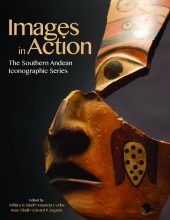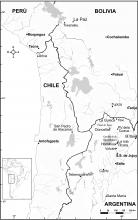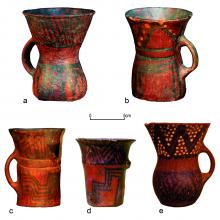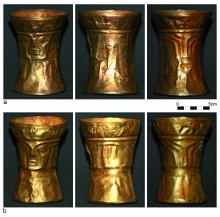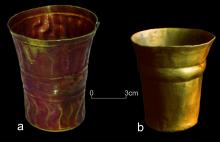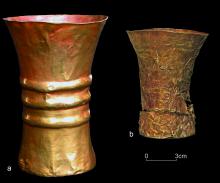Visual database
Map of the south-central Andes showing locations of the Quebrada de Humahuaca, Puna de Jujuy, and archaeological sites discussed in the text.
Vessels in the Isla style. (a) La Isla A, tomb 18, ME 2647; (b) Tricolor with white dots, Pueblo Viejo de La Cueva, ME 31-297; (c) ME 73-874, without provenience; (d) Tchecar Sur-695; (e) Tricolor with white dots, Quitor 6 2569-2573, San Pedro de Atacama.
Kero of wood carved in Tiwanaku style, Quitor 5, Tomb 2241, San Pedro de Atacama.
The kero symbol held by a Personage with staffs carved on the Stone Receptacle from Offerings No. 1 found in the Semi-subterranean Temple at Tiwanaku. Note the kero image, seemingly turned sideways, in the staff held in the left hand, just above the thumb.
Effigy vessels of gold from Doncellas. (a) kero I; (b) kero II with constricted waist. INAPL Number 2613.
Effigy vessel of gold from Pueblo Viejo de La Cueva: front, profile, and three-quarters views. A. Linares collection.
Keros in Tiwanaku style from Pueblo Viejo de La Cueva. (a) embossed vessel with red paint; (b) plain vessel with constricted throat. A. Linares collection.
Keros of gold from the Quebrada de Humahuaca. (a) Volcán, with two constricted throats, ME 2276; (b) Hornillos, with deformation and breakage ME -90407.
Diadem of gold, El Morro, Tomb 11, La Isla, ME 2989.
Llamas figures cut from sheets of gold: El Morro, Tomb 11, La Isla, ME 3000 and 3001.
